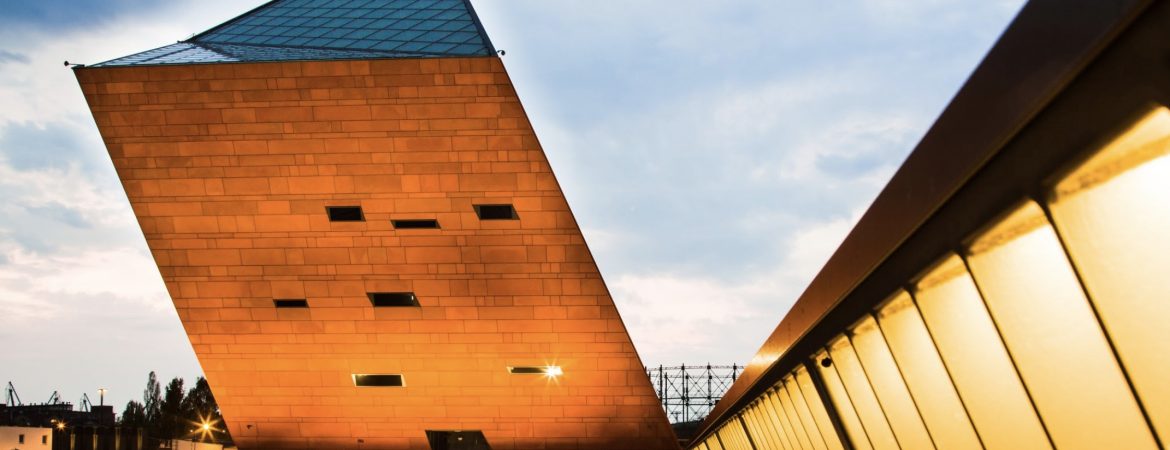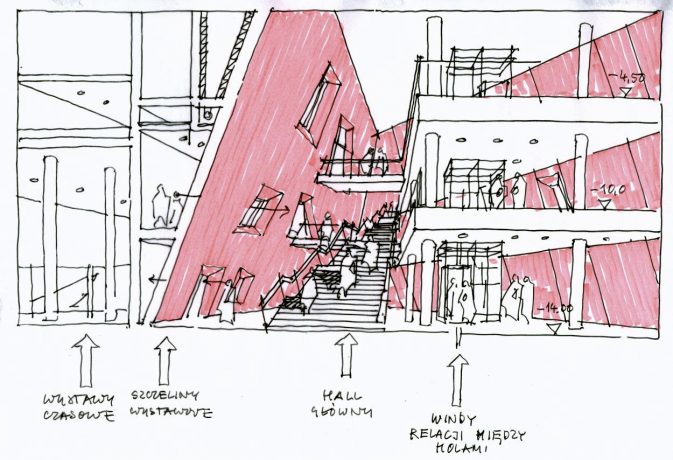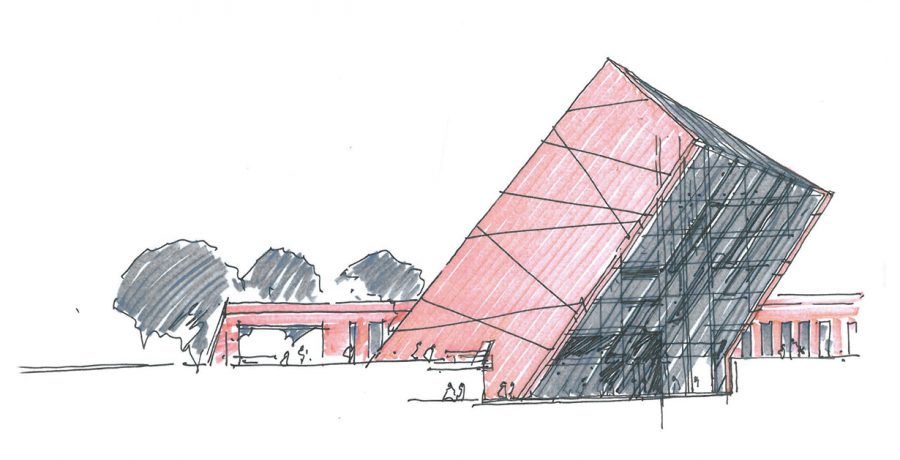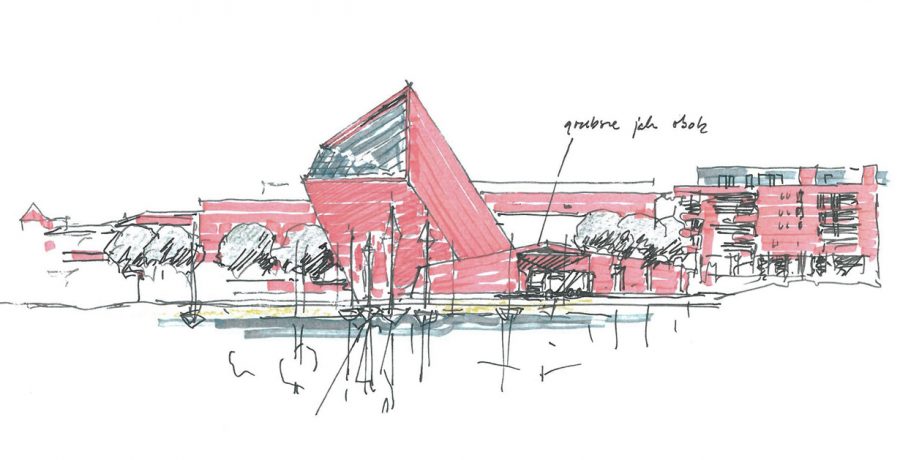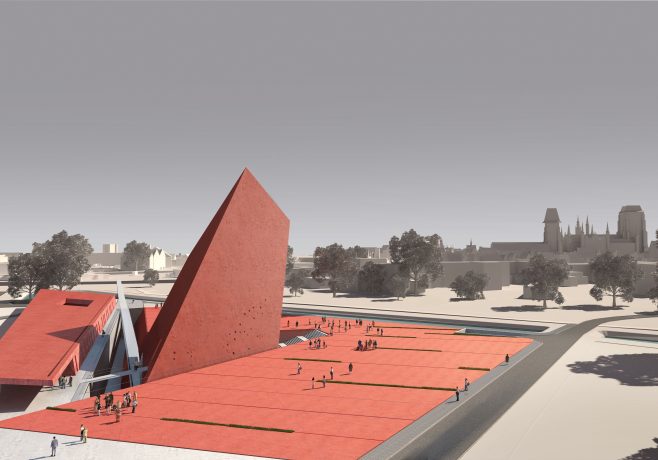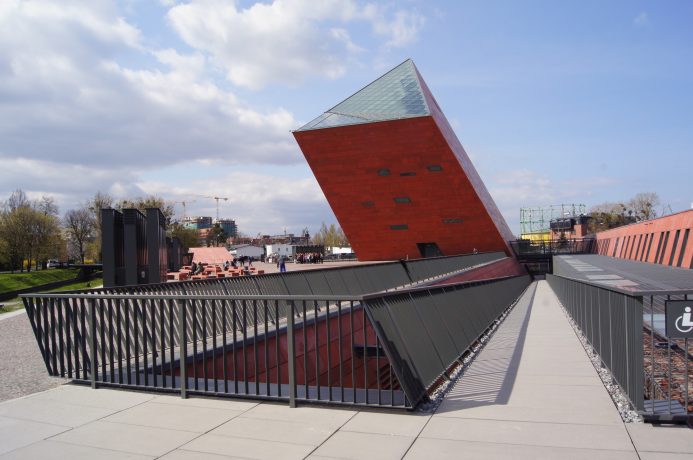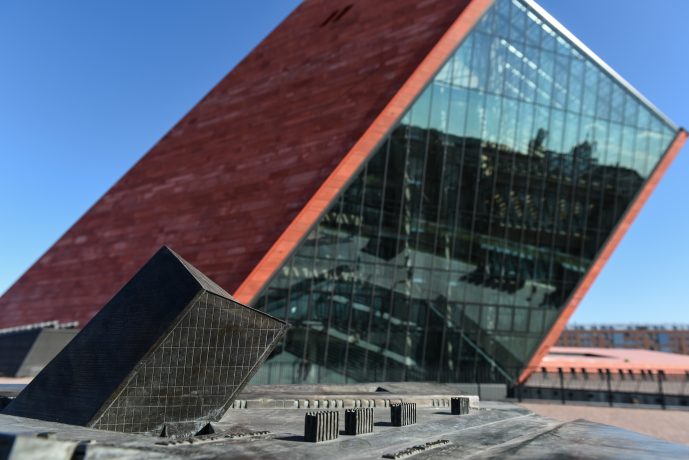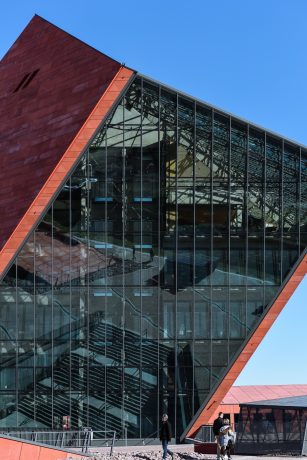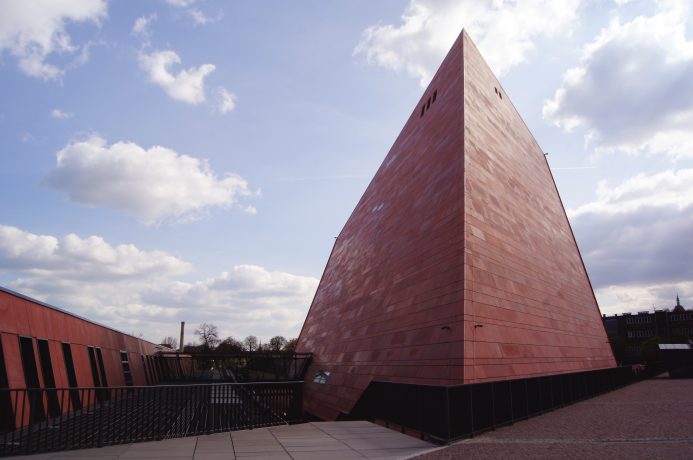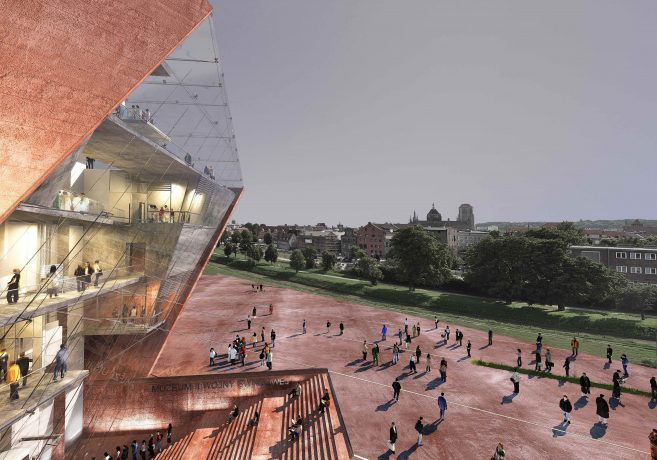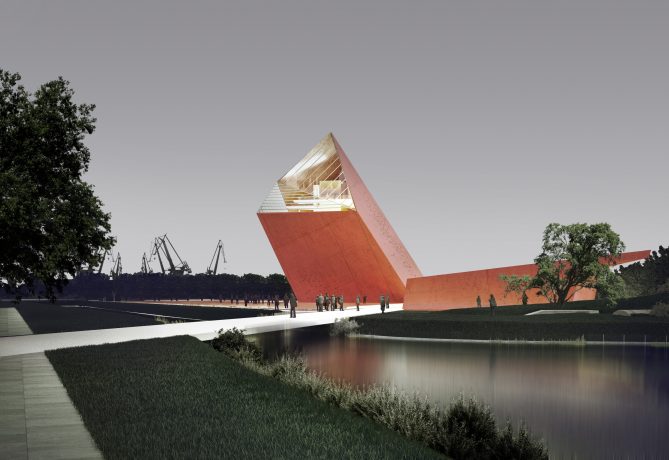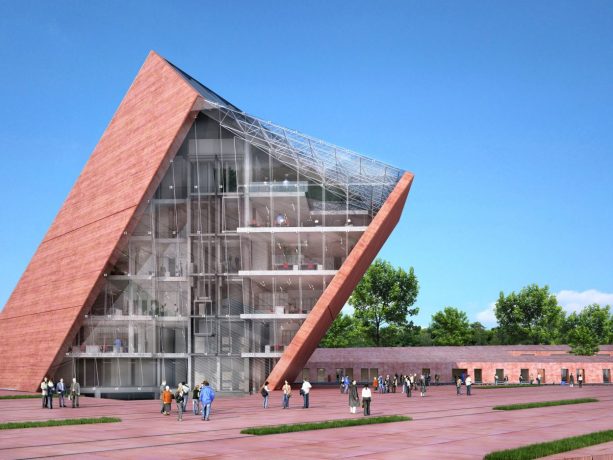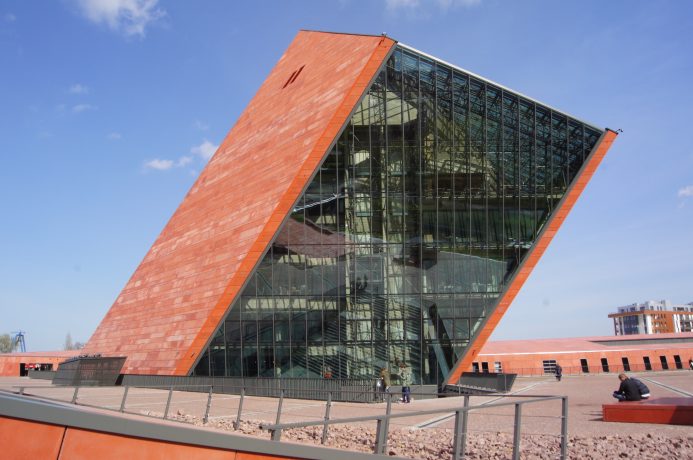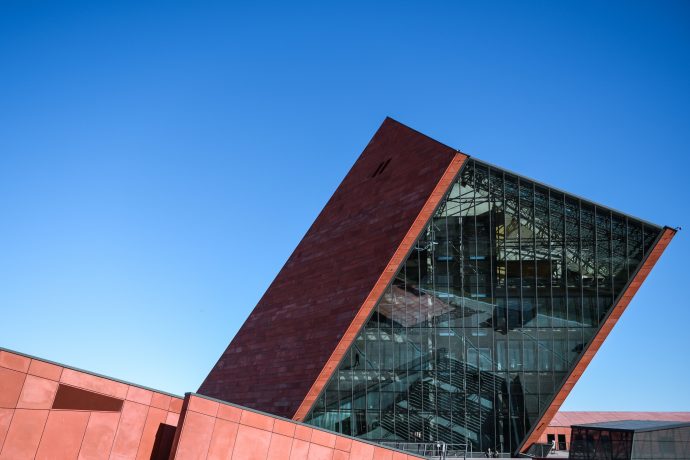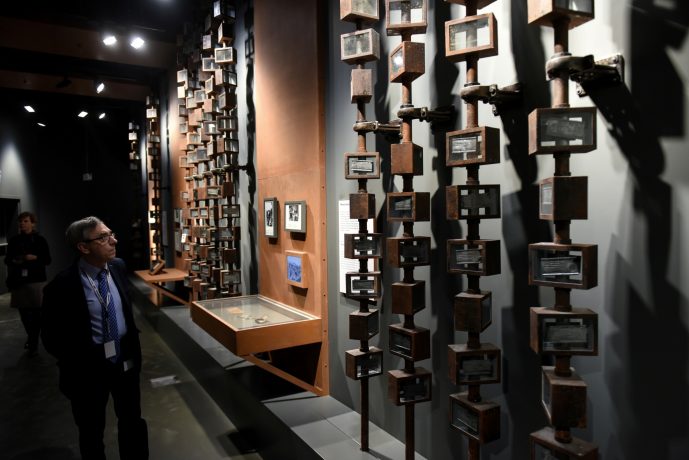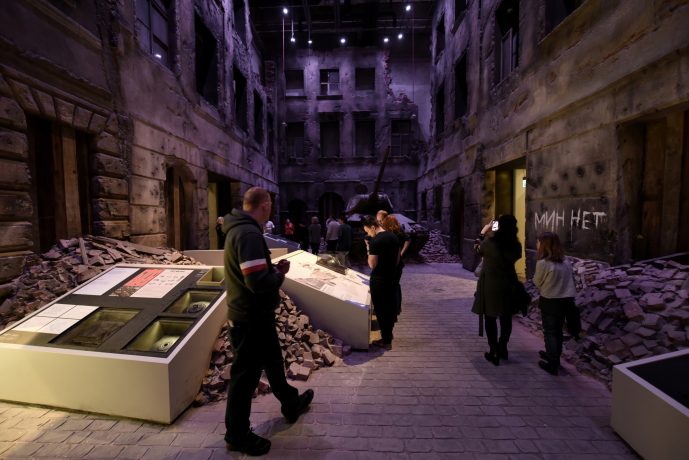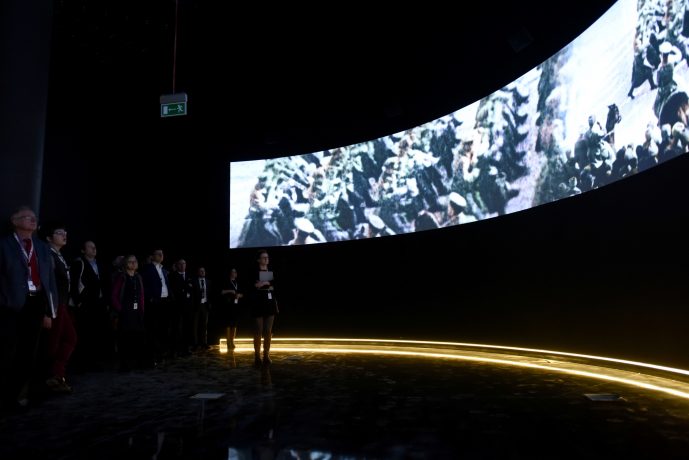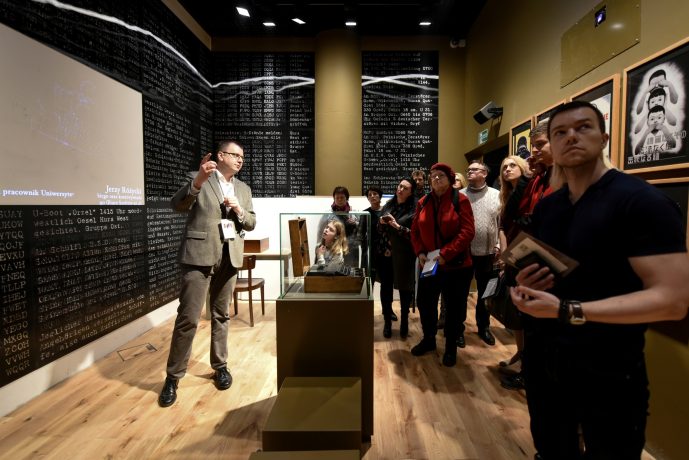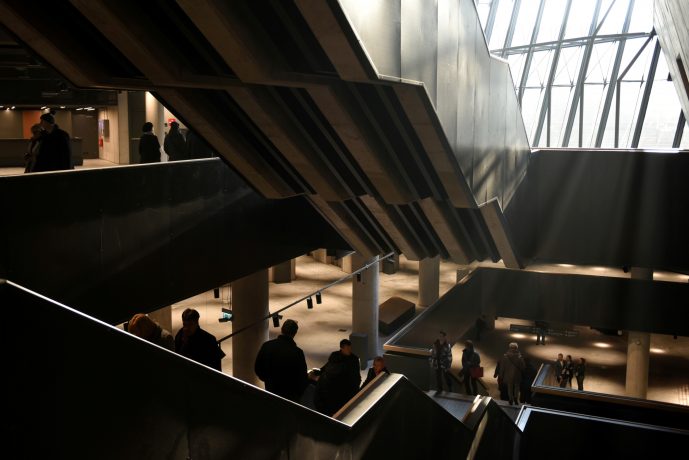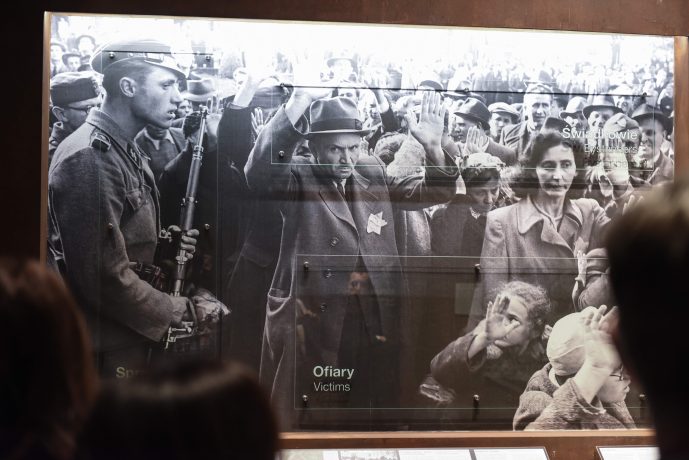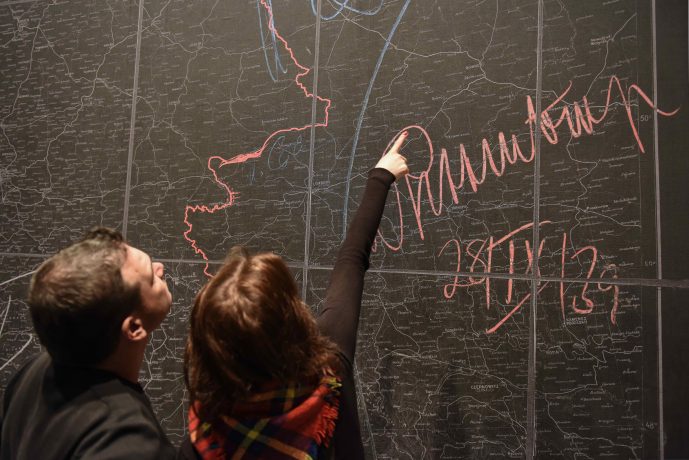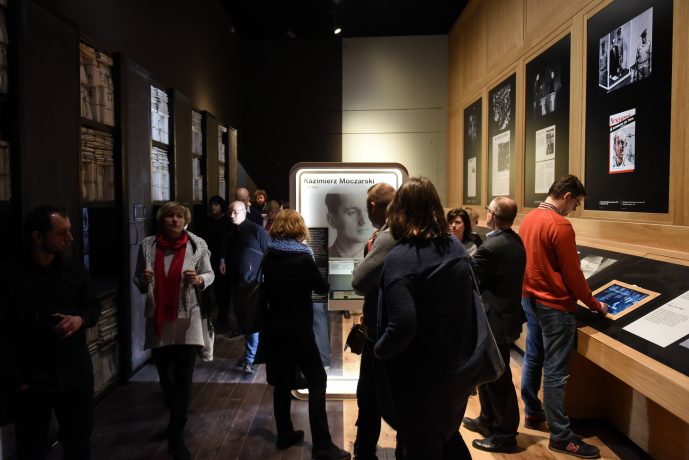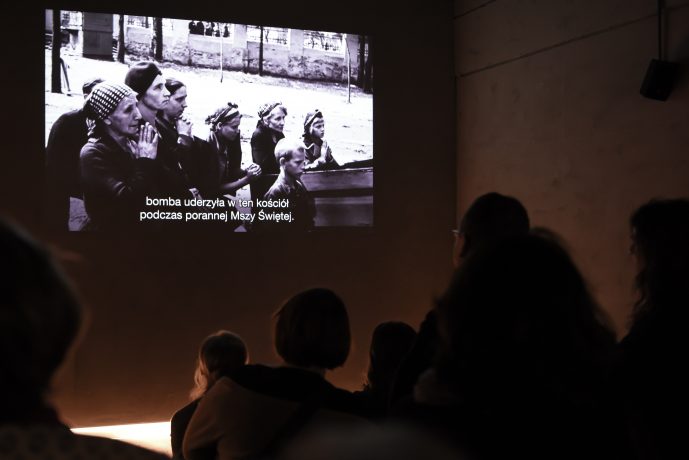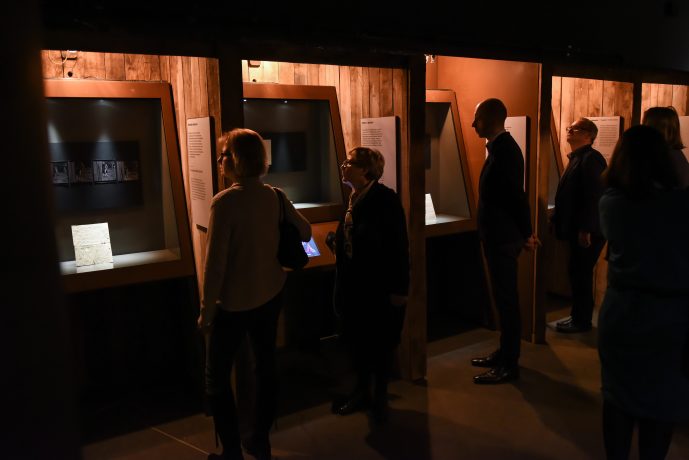A moving and awe-inspiring display of the loss and suffering experienced by the Polish people from 1939-1945 opened in the form of the Museum of the Second World War in Gdansk, Poland. The location is not accidental – the invasion by Nazi Germany into the Free City of Gdansk on September 1, 1939, marked the beginning of World War II.

The Museum’s main goal is to show that the wartime experience in Eastern and Central Europe was quite different from what the people of Western Europe lived through. The Museum focuses on the stories of individuals, societies and nations, where military events serve as mere background to the narrative about everyday lives, the terror of Nazi occupation and genocide, resistance to the occupying forces, diplomacy, and power politics.
The vast museum was created by the Polish KWADRAT architectural firm, chosen from 328 competing projects that presented an incredible range of solutions. The studio KWADRAT was founded in 1989 and is now led by architects Jacek Droszcz and Bazyli Domsta.
“We wanted the architecture to be a delicate suggestion rather than strong quotation for the World War II tragedy. That is how the idea of dynamic, expressive form had been brought to life, tearing apart the symbolic and dramatic shell covering the world, created by the war”. Studio Architektoniczne KWADRAT.
Daniel Libeskind, the world-renowned Polish-American architect, artist, and professor, was one of the jury members: “The jury selected a bold, sensitive, and unexpected solution. Using the language of architecture, the selected project shows the tragedy of the past, the vitality of the present, and open the horizons to the future”.
The building juts out of the earth at an angle of 56 degrees like the shaft of a stray rocket. It features a glazed facade and roof that offers a clear view of the city center, but to discover its main exhibition, you need to go three floors underground. Here, you will see one of the largest exhibitions presented by a history museum in the world, covering 5000 m² (53,000 square feet) and made up of three narrative blocks.


“The road to war,” devoted to the origins of the conflict, explores the powers established after the First World war that sought to destroy the world order – German Nazism, Italian Fascism, Soviet Communism and Japanese imperialism.


The second block, “The horrors of war,” focuses on the dominant theme of ordinary people and their daily lives as they struggled with genocide, terror, and abuse. The exhibition explains that ex-allies – the Third Reich and the Soviet Union - were both guided by political and economic concerns, where civilians were the bargaining chip. It shows both German crimes against the Polish people, intelligentsia and social elites (beginning in autumn 1939) and Soviet felonies, such as the murder of Polish officers at Katyn in 1940. Also, the block showcases unique historical artifacts, including the Enigma encrypting machine that was loaned to the Museum by the Polish Internal Security Agency.


The third block, “The war’s long shadow,” tells the story of the end of the war including the liberation of Europe, the simultaneous subordination of a large part of the continent to the Soviet Union, and the dropping of the A-bombs on Japan. This section is all about the war’s outcome, the long-term effect, the vast human and material losses, the frontier changes in Central and Eastern Europe, and the division of both Europe and the world. At the end of the exhibition, you can see screens showing key events on the two sides of the Iron Curtain side-by-side.


Above ground, symbolizing optimism for the future, are spaces where visitors can meet, visit the café, relax and dwell on what they have seen. The museum’s mission is also to serve as a center of education, culture, and research.
“It is not true that historians know it all about the Second World War. It is not true that all the questions about the era have been answered.” – British historian Norman Davies.
When the long-awaited, universal, complex, thought-provoking, and architecturally striking museum finally opened, its view of history was already being challenged. Back in 2007, Poland's then-prime minister, historian Donald Tusk, promoted the idea of creating a museum dedicated to the tragedy of 1939-1945. In 2017, the museum opened, but was bombarded with criticism from the current ruling conservative Law & Justice (PiS) party, whose main political rival was Donald Tusk. The museum’s first director and creator of the Museum, Pawel Machcewicz, tried to tell that story by not only focusing on Poland, but also through making Polish history part of a much broader tale.
PiS insisted that the war must not be presented against the vast international backdrop and that the narrative should not be thought-provoking, but rather devoted solely to the heroism of the Polish people. Politics versus culture, control over memory versus open discussion – as simple as that, PiS adopted the strategy of the USSR that Poland suffered greatly from (not the mention the Russian Empire, where the freedom of speech was also tentative and that divided and occupied Poland in 1772, 1793 and finally in 1795).
“History is lived once and described many times. I stay open to the fact that historians or public opinion might point to things that need to be changed or improved.” The newly appointed director Karol Nawrocki
As a representative of the ruling party supported by the majority of the Polish people, Karol Nawrocki continues to transform the Museum according to his views. When visiting it, you will see amazing relics of the period and learn of the touching, daunting stories of people’s heroism, self-sacrifice and neighboring cruelty, but remember that you should always learn history from multiple sources and you can rarely accept divisive issues at face value.
The idea of the Museum of the Second World War is profound yet simple. During any war, sides fight over territory, while civilians living on that territory suffer the most. Similarly, when in pursuit of political gain, sides fight over a historical museum, but non-partisan narration (that is supposed to be the characteristics of history) suffers the most. We remember George Orwell and the "memory hole" from 1984 when talking about the current Russian government, but we can also, apparently, quote him talking about PiS with its concept of the “politics of memory”.
“Memory Hole" – a slot into which government officials deposit politically inconvenient documents and records to be destroyed“.
